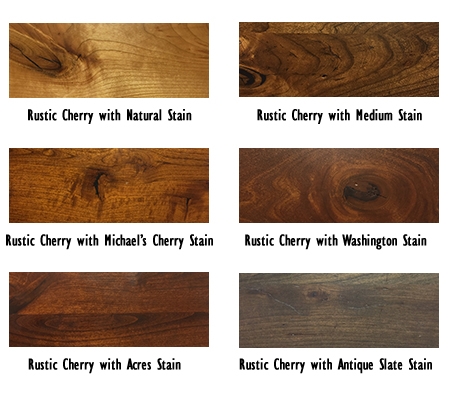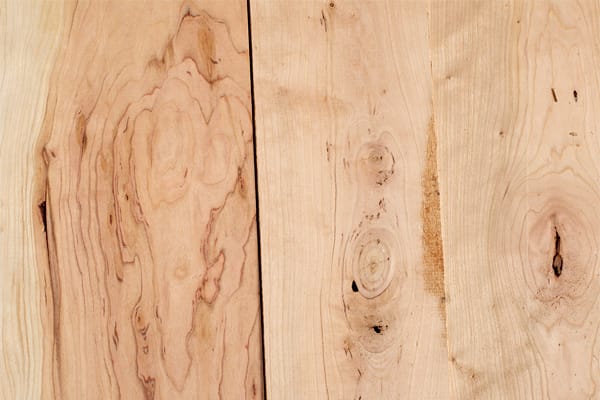Are you curious about whether cherry wood has knots? Well, let’s dive right into it! Knots can add character to wood, but they can also affect its strength and appearance. So, in this article, we’ll explore whether cherry wood is prone to knots and what that means for its practical and aesthetic uses.
Now, I know you might be wondering why knots in wood matter. Think of them as natural imperfections that occur when branches grow out of the tree trunk. Some people love the rustic charm knots bring, while others prefer a smoother, more refined look. So, sit tight as we uncover the truth about cherry wood and its knots.
When it comes to cherry wood, it generally has fewer knots compared to other types of wood. This hardwood is known for its straight grain and smooth texture, making it a popular choice for furniture, cabinets, and flooring. However, keep in mind that not every piece of cherry wood is knot-free. So, let’s explore the possibilities and learn more about the fascinating world of cherry wood and its knots.

Does Cherry Wood Have Knots?
Cherry wood is a popular choice for furniture and woodworking projects due to its rich color and durability. However, when working with cherry wood, you may come across knots in the grain. In this article, we will explore the presence of knots in cherry wood, their characteristics, and how they can affect your woodworking projects.
The Nature of Knots in Cherry Wood
Cherry wood is known for its beautiful grain patterns, which can include knots. Knots are naturally occurring imperfections in the wood where branches once grew. They are formed when the branch dies and becomes surrounded by new wood growth. Over time, the branch becomes encapsulated and creates a knot in the wood grain.
These knots can vary in size and shape, ranging from small pin knots to larger, more pronounced knots. In cherry wood, knots tend to be darker in color compared to the surrounding wood, creating a desirable contrast in the overall appearance of the finished piece.
While knots are a natural part of the wood, they can present challenges when working with cherry wood. It is important to understand the characteristics of knots and how they can impact your woodworking projects.
Effects of Knots on Woodworking Projects
While the presence of knots in cherry wood adds character and uniqueness to the finished piece, they can also pose challenges for woodworkers. Here are some factors to consider:
- Strength: Knots can weaken the overall strength of the wood, particularly if they are large or extend through the entire thickness of the board. This can affect the structural integrity of furniture or other woodworking projects.
- Stability: Knots can cause the wood to warp or twist, especially if they are not properly sealed or stabilized. This can lead to issues with the dimensional stability of the finished piece.
- Workability: Knots can be harder and denser than the surrounding wood, making them more difficult to cut, shape, or sand. This can slow down the woodworking process and require special techniques or tools.
Despite these challenges, many woodworkers appreciate the unique character that knots bring to cherry wood projects. With proper techniques and precautions, knots can be successfully incorporated into your designs.
Dealing with Knots in Cherry Wood
When working with cherry wood, it is important to take certain steps to address the presence of knots:
- Selection: When choosing cherry wood for your project, inspect the boards for knots and determine if they align with your desired aesthetic and project requirements. Avoid boards with large or excessive knots if strength and stability are a concern.
- Stabilization: Before using cherry wood with knots, consider stabilizing the knots to prevent further movement or damage. This can be done by using a wood stabilizer or applying epoxy resin to the knots.
- Techniques and Tools: When working with knots, use appropriate woodworking techniques and tools to safely cut, shape, or sand around them. Specialized saw blades or drill bits designed for working with knots can help minimize damage to the surrounding wood.
By carefully selecting, stabilizing, and employing proper techniques, you can successfully incorporate knots into your cherry wood projects, enhancing their beauty and charm while ensuring their durability.
Key Takeaways: Does Cherry Wood Have Knots?
- Cherry wood can indeed have knots, but their presence varies.
- Knots are essentially areas where branches grow from the tree trunk.
- Knots can give cherry wood a unique and rustic appearance.
- Cherry wood with fewer knots is often preferred for a smoother finish.
- Some woodworkers embrace knots for their character and incorporate them into their designs.
Frequently Asked Questions
Are you curious about whether cherry wood has knots? Look no further! Below are five engaging Q&A pairs to satisfy your curiosity:
1. Are knots commonly found in cherry wood?
Yes, knots can be found in cherry wood, although they are not as common as in some other wood species. Cherry wood is known for its smooth and consistent grain, which is one of the reasons it’s highly valued. However, occasional knots may appear, adding character and uniqueness to the wood.
It’s important to note that the presence and size of knots can vary from one cherry wood piece to another. Some may have very few knots or none at all, while others may exhibit more pronounced knot formations.
2. Do cherry wood knots affect its strength?
No, cherry wood knots generally do not significantly impact its strength or structural integrity. Although knots are areas where branches once grew, the knots in cherry wood are usually small and tight. They are typically sound and do not compromise the wood’s strength or durability.
In fact, some people appreciate cherry wood with knots as they add a touch of natural beauty and aesthetic appeal to the finished product. However, if you require wood without any knots, it’s advisable to carefully select lumber cuts or consider alternative wood species with fewer knots.
3. Can knots in cherry wood be filled or repaired?
Yes, knots in cherry wood can be filled or repaired if desired. Some woodworkers and craftsmen choose to fill knots with epoxy resin or wood putty to create a smoother, more consistent surface. This technique can enhance the visual appeal of the finished product.
It’s important to note that filling knots in cherry wood is a personal preference. Some individuals adore the rustic charm and character that knots bring, while others prefer a more refined and knot-free aesthetic. Ultimately, the decision to fill or repair knots in cherry wood depends on the project and desired outcome.
4. Do knots affect the staining or finishing of cherry wood?
Knots in cherry wood can present some challenges when it comes to staining or finishing. The density of the wood around the knot may absorb stain differently, resulting in a slight color variation. It’s crucial to properly prepare the knots and use appropriate sealing techniques to achieve an even finish.
Woodworkers often use knotting solutions or sanding techniques to minimize the potential impact of knots on the final stain or finish. Additionally, selecting a suitable wood dye or stain color can help highlight the natural beauty and variation in cherry wood with knots.
5. Are there any advantages to using cherry wood with knots?
Absolutely! Cherry wood with knots can add unique character and visual interest to furniture, cabinetry, or other woodworking projects. The knots create a sense of natural beauty and rustic charm, showcasing the organic nature of the wood.
Furthermore, cherry wood itself is highly regarded for its warmth, smoothness, and deep color. Combining these qualities with knots can result in a truly exceptional and one-of-a-kind piece. So, if you appreciate the natural beauty and want your woodworking project to stand out, cherry wood with knots can offer distinct advantages.

Summary
Cherry wood can have knots, but it’s not always covered in them. Some cherry trees produce wood with knots, while others have smoother wood. Knots give the wood character and can add to its beauty.
However, knots can also cause problems, like making the wood weaker or harder to work with. It’s important to consider these factors when using cherry wood for projects.
In conclusion, cherry wood can have knots, but whether or not it does depends on the specific tree. Knots can enhance the wood’s appearance, but they can also impact its strength and ease of use. So, when working with cherry wood, it’s crucial to keep in mind the presence and potential effects of knots.
